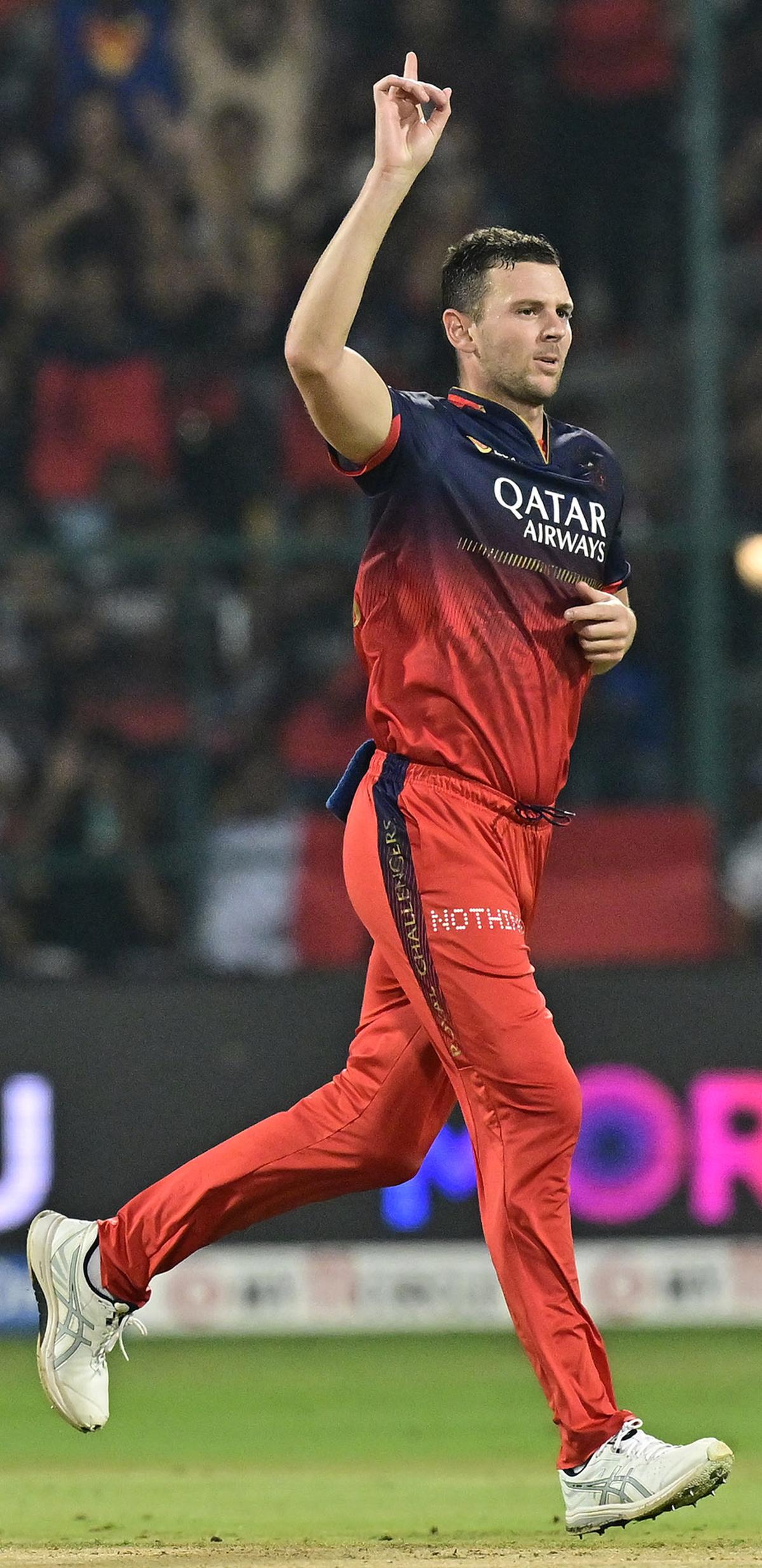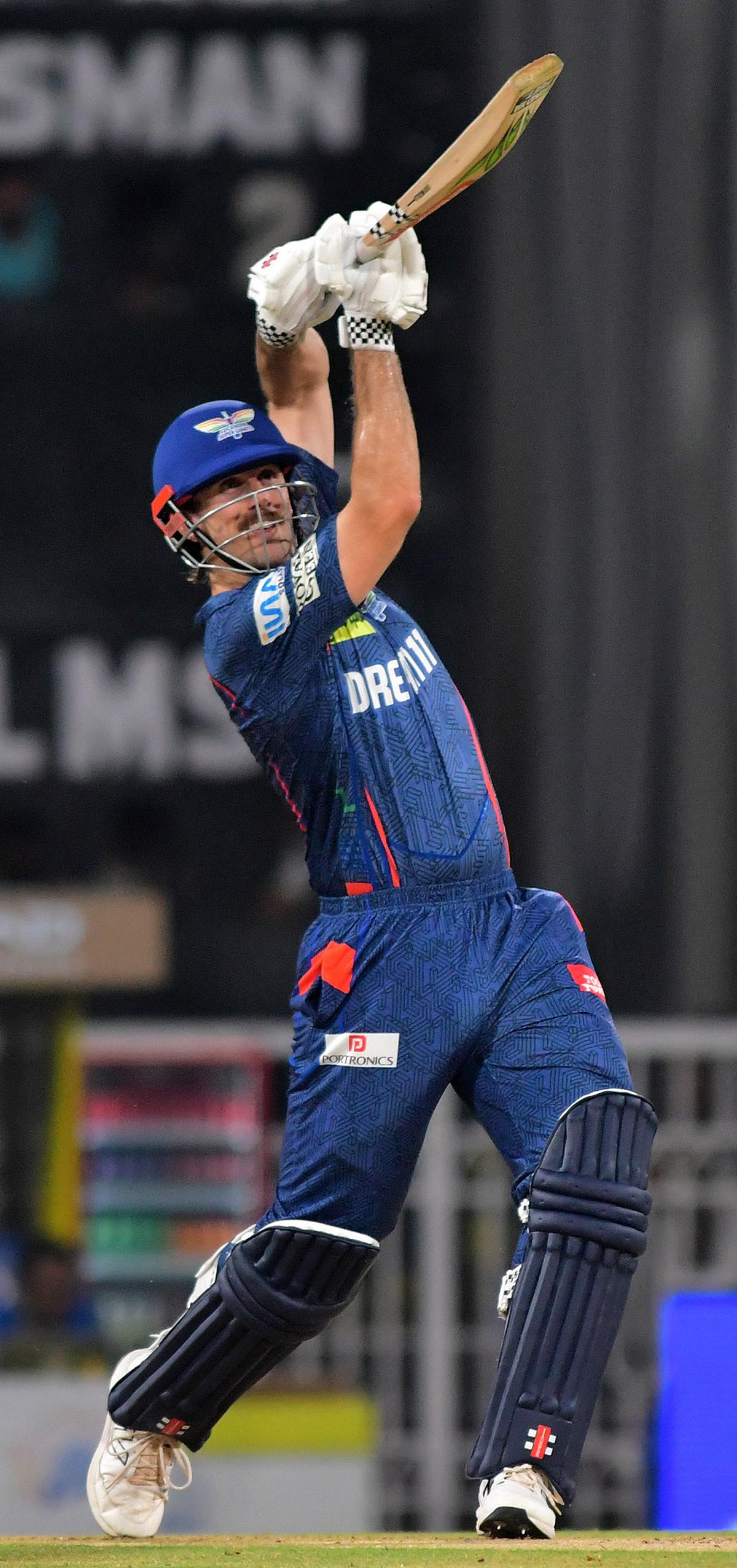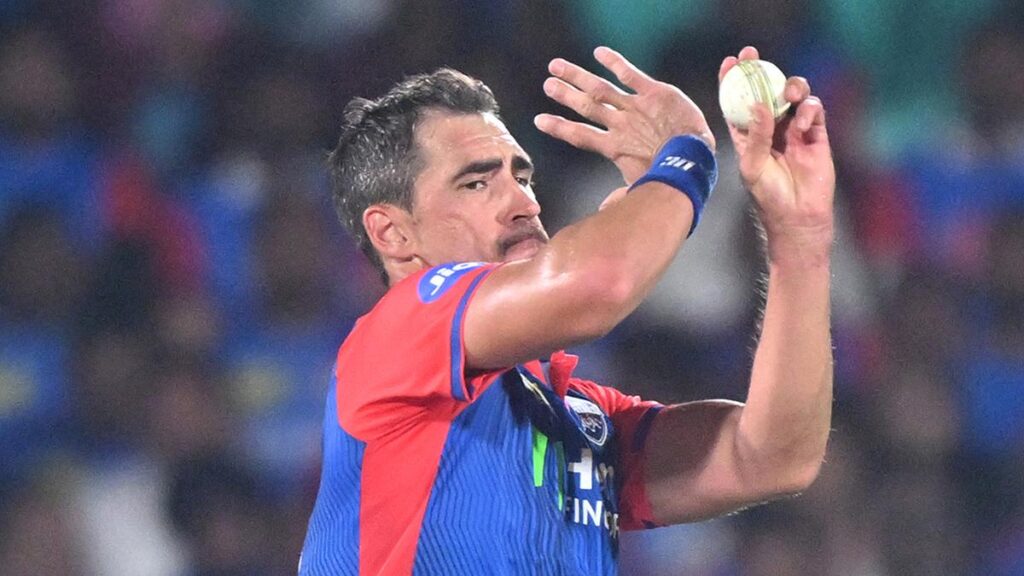The precision-personified Josh Hazlewood has been the standout Australian performer of this IPL season. The ‘Hazlegod’ nickname, conferred on by RCB fans, feels earned.
In stark contrast, Glenn Maxwell has been drastically underwhelming considering his T20 form before the IPL; Jake Fraser-McGurk has regressed from explosive to ineffective; Travis Head, though he’s still contributing, hasn’t dominated pace like last season and is clearly below his blistering 2024 standards.
From the best to the worst, here’s a performance breakdown of the regularly-featured key Australian players in this IPL season.
Josh Hazlewood (18 wkts): At the MRF Pace Foundation ground here in March, Glenn McGrath, asked to pick pacers he thought would do well this season, picked Josh Hazlewood – besides, of course, Jasprit Bumrah (no-brainer) – for their “best control.”
McGrath added: “You don’t have to bowl a completely different ball every ball, but as long as you have that execution…”

Josh Hazlewood celebrates
| Photo Credit:
MURALI KUMAR K
How well has Hazlewood executed for the Royal Challengers Bengaluru this season! To begin with, a honed skill and a physical attribute have helped him shine. Nothing fancy.
Honed skill: Consistently bowling in the channel outside off.
Physical attribute: 1.96 m tall = high release point = steep bounce.
In the past year (until the first week of April), almost half of Hazlewood’s bowling (45 per cent) across formats has been in the channel outside off! Only Dushmantha Chameera betters him among all the seamers to have bowled at least 250 balls in that time.
RCB’s pace attack had the best dismissal rate with short balls (7.5 balls per dismissal) until its reverse fixture versus Rajasthan Royals in Bengaluru. Hazlewood has significantly contributed to it. For instance, his persistence with short length, despite getting hammered, fetched him Yashasvi Jaiswal’s wicket in that match. And all his three wickets against Chennai Super Kings in Chennai came off bouncers.
He’s been economical too. In the PowerPlay, he’s picked up seven wickets at an economy of 7.22, the second-best among those who’ve picked up at least five wickets and among those who’ve bowled at least 100 balls in that phase.
At the Death (last four overs), he’s picked up six wickets at an economy of 9.04, the second-best among those who’ve picked up at least five wickets in that phase. He has bowled the second-most dot balls at the Death (26), and was the first to bowl a hundred dot balls (103) overall. Where he’s been unique in that phase is that he’s bowled 72 per cent of his deliveries in the good, short-of-good, and short lengths until that RR fixture at home. He’s hit the short-of-good length the most and has bowled only 10 per cent of yorkers.
That said, his execution of yorkers is also remarkable. For instance, he nailed seven yorkers in his two overs at the Death against Punjab Kings in Mullanpur.
Where he’s been a tad unlucky is that at one point, 23 per cent of the boundaries he’d conceded had come off false shots, the highest such percentage for any bowler. But even that only adds to his brilliance this season.
He’s picked up six wickets in his opening overs, the most for any bowler, that now a wicket is expected of him whenever he begins his spell!
Tim David: Hazlewood’s teammate, slotted into the finisher role, now owns it. Until the PBKS match in Mullanpur, where he came in early and had to bide his time with wickets falling around him, he was striking at 179 in his first ten deliveries of an innings this season. That’s a drastic improvement from his past two seasons – 144 in 2023, 137 in 2024.
His strike rate of 219.29 with an average of 62.50 at the Death this season is elite, to say the least. While he has the best strike rate among those who’ve faced at least 50 balls at the Death, he’s also hit the most sixes (11) in that phase.
Mitchell Marsh: With 378 runs at 155.55, Marsh has had a fine season. His power-hitting as an opener has helped Lucknow Super Giants get to substantial scores in the PowerPlay.
Perhaps, relying on his muscle power, he hasn’t shown any inclination to target the shorter side, despite a significant disparity in the boundary sizes. In the first five matches, he’d hit 48 per cent of his runs towards the longer side and only 23 per cent on the shorter side. The rest had come straight.

Lucknow Super Giants’ Mitchell Marsh
| Photo Credit:
SANDEEP SAXENA
He’s adept at taking down pace, and so batting in the PowerPlay played to his strength. He’s struck at 157.24 in the PowerPlay and pace in general at 170.06. He’s hit the fourth-most sixes (14) in the PowerPlay after Yashasvi Jaiswal (19), Priyansh Arya (16), and Ajinkya Rahane (15).
Mitchell Starc: While his compatriot Hazlewood prefers the short-of-good length at the Death, Starc is an expert in bowling yorkers. He can execute not only yorkers but also reverse-swinging yorkers. With the saliva ban lifted this season, data shows that the pacers are getting a greater average degree of swing at the Death than last season. Pronounced reverse swing could be a reason why Starc had already bowled double the number of yorkers (10) at the Death in the first five matches than he had in the first five matches last season (5). And he’s bowled them at a better economy of six than last season’s 13.2.
Against RR at home, when he put up a masterclass in bowling tailing yorkers across three overs, including the Super Over, he was getting around 1.2 and 1.8 degrees of swing in his last two overs and his Super Over. He’s picked up half (7) of his total wickets (14) at a good economy of 9.50 at the Death.
While he has the worst PowerPlay economy (11.30) among those who have bowled at least 100 balls in that phase and an overall economy of 10.23, Starc’s USP is that he’s a clutch player who can get important wickets and seize the crucial moments. Sometimes, even his figures may not reflect that – like his one for 36 (in four overs) in his Player-of-the-Match performance versus RR.
Pat Cummins: Cummins’ best bowling performance of the season came in SRH’s last, rain-hit match versus Delhi Capitals in Hyderabad. Consequently, Sunrisers Hyderabad put up its best bowling performance of the season before it rained and the points were split.
Cummins had bowled only 16 overs in the PowerPlay in 10 innings before that match, a rounded average of 10 balls per match. He had picked up four wickets at an economy of 9.81. He’d opened the bowling only once.
So, in that must-win match against DC, he not only chose to lead from the front by opening the bowling, but also picked up a wicket each in three overs at a miserly economy of 4 in the PowerPlay. It helped him become the bowler with the third-most wickets in the PowerPlay. His overall PowerPlay economy came down to 8.89 after that match. His overall economy of 4.75 in that match is his best for SRH and his third-best in the IPL.
But where he’s really struggled this season is at the Death. His economy of 13.20, compared to last season’s 11.60, is the fourth-worst among those who’ve bowled at least 30 balls at the Death.
Travis Head: Head hasn’t had a poor season, though it may seem so compared with last season. He’s still striking at 156.11, but that’s a big drop from last season’s 191.55.
A comparison of his PowerPlay strike rates is a study in contrast, for it’s a middling 155.11 to last season’s 208.29! While there isn’t a big difference in his strike rates versus spin in 2024 and 2025, his strike rate against pace has dropped to 155.37 from last season’s 203.94. Though he has hit two fifties and got a few good starts, at times he seems to try too hard to play his shots.
Jake Fraser-McGurk: From having been the opener with the best strike rate (234.04) last season to striking at just 105.76, it’s been quite a downfall for Fraser-McGurk this season. Of his 55 runs this season, 38 have come in one innings!
He’s survived beyond the PowerPlay in only six of his 30 T20 innings since the conclusion of last IPL season. He seems a one-dimensional blind-hitter and needs a method to his madness.
Glenn Maxwell: Maxwell’s had a horrible season, to say the least. He’s hit 48 runs, striking at fewer than a run a ball (97.95). He’s had 12 single-digit scores in his last 15 IPL innings.
But the interesting part is that he’d scored 674 runs in 22 T20 games, striking at 168.9, between the end of the last IPL season and the start of this season.
Perhaps, much like Stephen Fleming and his CSK did, Maxwell too has a bit of “soul-searching” to do.
Marcus Stoinis: He’s batted only twice at the Death this season, and that’s where he’s added value to PBKS. Forty-nine of the total 82 runs he’s scored this season have come at the Death at a mammoth strike rate of 306.25, the fourth-best and the best among those who have faced at least 15 balls in that phase. It includes four consecutive sixes in the 20th over off Mohammed Shami against SRH in Hyderabad.
Josh Inglis: Inglis hasn’t had a remarkable season except for a sprightly cameo (30, 14b, 1×4, 4×6) inside the PowerPlay against LSG at Dharamshala.
Published – May 13, 2025 12:13 am IST

